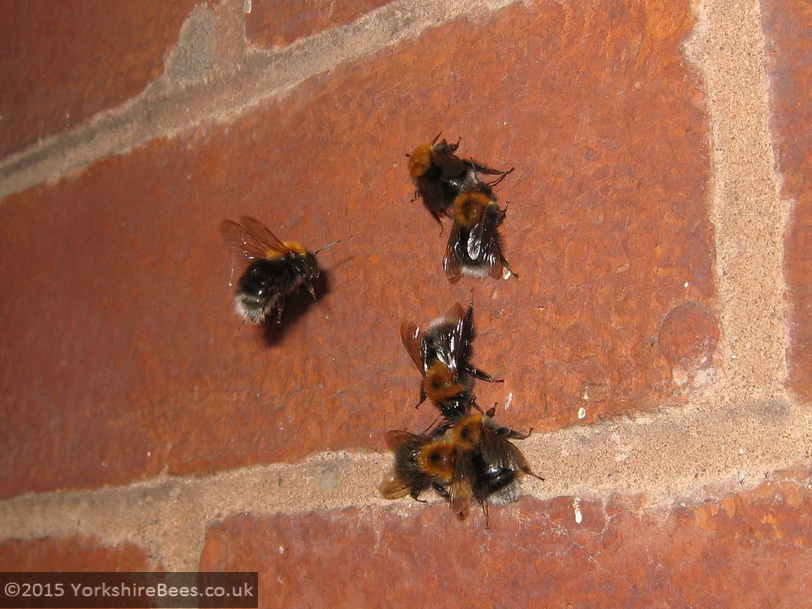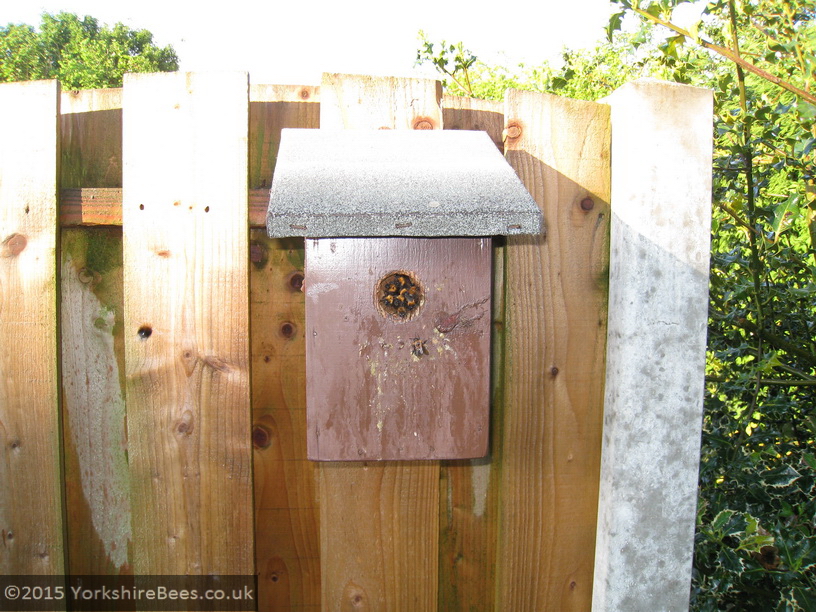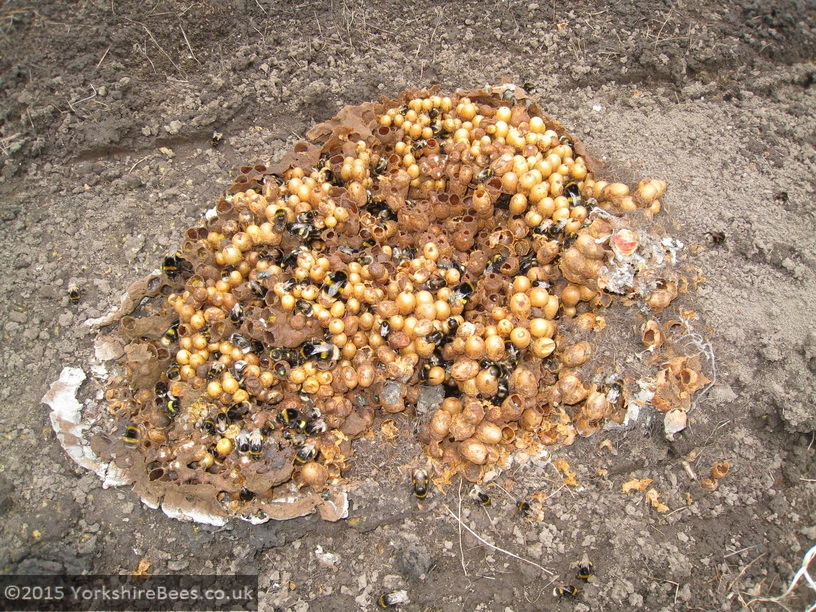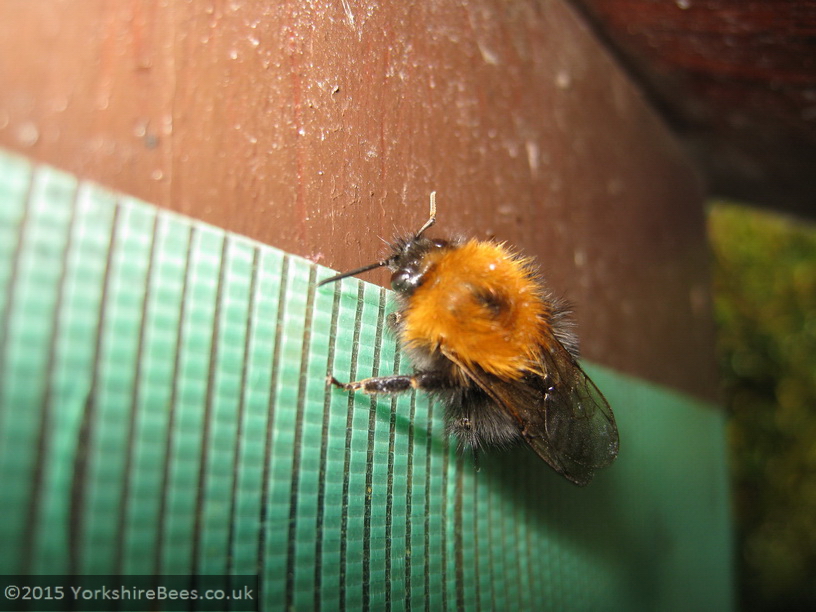Bumblebee Nests
Identifying bumblebee nests and advice
Bumblebee nests are very common and most of the time go totally un-noticed by people.
They have however, over the last few years, started appearing is places that make them more noticeable.
Bumblebees and in fact all pollinators have been in decline for many years for a number of reasons. One of the main reasons is lack of suitable habitat to nest inand also lack of suitable forage.
Approximately 4 years ago one particular species of bumblebee started to nest in bird nesting boxes. The Tree bumblebee is so called as its natural nesting place is in trees. There not being enough suitable trees in urban areas to nest in means that it sought out other nesting opportunities at height. Bird nesting boxes, especially blue tit boxes, offered an almost perfect home in which to build a nest.
In the last couple of years the same species has moved higher and I have had countless reports of nests built in and around property rooflines.

Lifecycle of a bumblebee nest
Each and every bumblebee nest was started by a single queen bee that was born and mated the previous year and hibernated over winter. Sometime during Spring or early Summer (weather dependant) the queen will have emerged from her hibernation and after feeding herself on flowers she will have gone in search of a suitable nesting site. When she finds a site she then has the hard task of building the nest and provisioning it (gathering enough nectar / pollen) all by herself. She will then lay her first set of worker bee eggs. Only when the first lot of worker bees have hatched and are able to forage themselves will the queen stop foraging and stay inside the nest laying eggs.
Slowly the nest will start to build up in numbers but at this point unless you know where the nest is or follow a bumblebee back to it you will probably not realise there is a nest and the number of bees coming and going is still low and they will litterally fly out to the flowers and fly back.
As the nest matures the Queen will now lay some eggs that become male bees (drones) and after that she will finally lay the eggs that will become new queens.
Only at this point, several months into the nests life, will it become more obvious where a bumblebee nest is as the males will start to 'dance' round the entrance waiting for the newly emerged queens to come out of the nest for mating.
Once all of the new queens are mated they will all leave the nest and go in search of places to hiberate (generally soft earth bankings) and the nest will slowly die off.
Come late Summer / early Autumn most bumblebee nests will be empty.
Advice on what to do when finding a bumblebee nest
First thing is not to panic. An average UK garden can have 2-3 nests and most of the time no one notices them.
Bumblebees are very docile bees and if you leave them alone they will leave you alone. They will only become defensive if they feel their nest is threatened.
The best thing to do is leave them where they are and wait until the nest has died off (Autumn) as described above. At this point if you don't want the possiblity of they nesting in the same place again next year then you can block up the access hole they have been using.
Bumblebee nests are very small and cause no damage at all. You may want to help them out by leaving the nesting site open so they can used it again if they find it.
I DO NOT move bumblebee nests unless they are contained in a bird nesting box and in a dangerous position as they are extremely fragile and the chances of killing the nest are too high.


